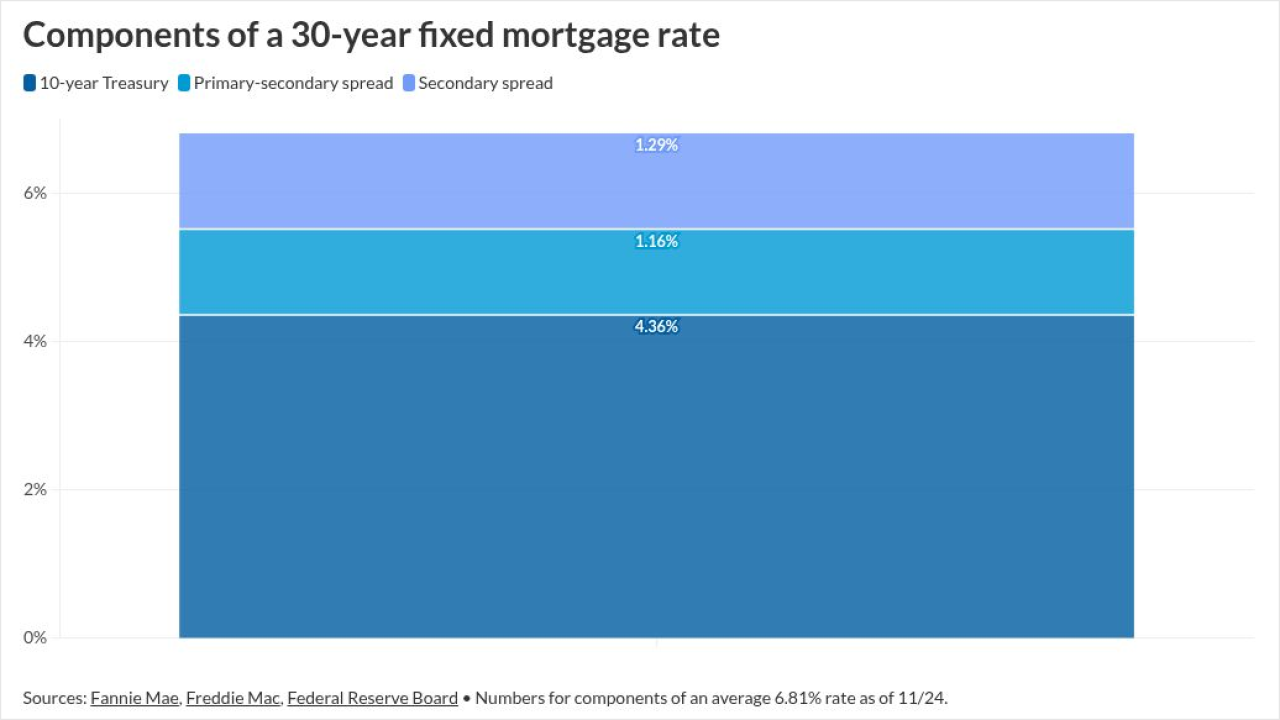Most industries have mostly if not fully recovered from the COVID-19 pandemic, but office commercial real estate (CRE) retained some residual stresses. Banks are struggling with how to deal with loans to office properties, for which the vacancy rate in the U.S. rose to a record-breaking 19.6% in the 4th quarter, according to Moody's Analytics, compared to the pre-pandemic average of 16.8%. The consensus is that trophy Class A office buildings, with state-of-the-art facilities and attractive amenities, but less-than-trophy Class A as well as Class B and Class C buildings will face choppy if not turbulent waters over the next few years, especially if interest rates remain stubbornly high.
In search of insights into the current office commercial mortgage-backed securities (CMBS) market, Asset Sales Report (ASR) spoke to Chris Hentemann, founder of 400 Capital Management (400CM), which invests across a range of structured products with a focus on asset-backed credit markets. Now managing $6.2 billion in assets, it seeks to combine high returns with low volatility and correlation to the fixed-income and equity markets by actively rotating sectors and employing long and short strategies.
Hentemann has a long history in the structured finance business, including an early stint as vice president of MBS trading at Salomon Brothers. That was followed by 11 years at Bank of America where he headed global structured products, including residential and commercial mortgage-backed securities and tax and credit derivatives.
ASR: What strategies does 400 Capital prefer when investing in specific products?
Hentemann: We invest directly in office through nonperforming loan (NPL) strategies--first mortgage notes at deep discounts--and certain CMBS financings. Our preferred classes of single-asset, single-borrower (SASB) CMBS are BBB and BB. We also invest in multi-asset commercial mortgage-backed securities (CMBS), in the most junior tranches.
ASR: What makes those class B tranches attractive now?
Hentemann: The level of fear in the market is at such a level that lenders can dictate the very best terms, whether its pricing, covenants or asset selection, such that the risk-adjusted returns are in our favor like no other asset class.
ASR: The WSJ recently painted a grim picture of the office CRE sector. Where in the office CMBS market does 400CM see opportunities currently and why?
Hentemann: We'll invest in certain newly originated CMBS B-piece and junior classes that offer wide spreads and sufficient subordination necessary to cover stress beyond what we see today, with very conservative, "full fear" underwriting criteria. We will also make direct debt investments for the right combination of sponsor, metropolitan statistical area (MSA) and property type, where we can get comfortable with the basis and capital reserves necessary to fund new leasing activity.
ASR: What other elements do you look for?
Hentemann: Long-term, stable tenants in strong markets make the biggest difference. We believe that [the] office [sector] is going through a structural cycle post-COVID, in which-like retail post-Amazon-the utilization of the existing space is critical to survival.
ASR: Do you see the outlook for existing office CMBS worsening or improving this year?
Hentemann: The extended tight monetary policy and lagging occupancy and utilization trends in office CRE will continue to put pressure on origination and legacy loan performance, especially floating rate loans. Secondary spreads for legacy CMBS have not adjusted for this yet, and picking credits is at a premium with weak fundamentals still in play.
ASR: What is your outlook for new office CMBS deals through the rest of 2024?
Hentemann: New office CMBS deals will be rare and volume is not expected to meaningfully increase compared to 2023. Maturing loans with fixed rates will generally get extended or repaid. Those with floating rates are defaulting or getting close. The only deals we see getting done are those with a capable sponsor who owns a high-quality property and can afford to bridge the equity gap on a maturing loan.
ASR: Office buildings are starting to sell at steep discounts, making it harder for banks to "pretend and extend" loans. When do you see banks ramping up provisions significantly and taking losses?
Hentemann: Bank loan-loss provisions will continue to step up meaningfully in the near term. We expect the relatively good environment for bank earnings will allow room for more bank executives to take provisions this year.
ASR: What types of structured office CRE transactions do you anticipate seeing more of as banks seek to improve their balance sheets and regulatory capital?
Hentemann: We anticipate more bulk loan sales, although that can be challenging for banks' earnings. We also see a lean toward more credit-risk-transfer (CRT), off-balance sheet solutions where markets allow. The solutions will be unique to the exposures and capital constraints at medium-to-smaller institutions.
ASR: Which types of banks are most likely to pursue these transactions and why?
Hentemann: Banks with outsized CRE exposures, especially development loans, and books of floating-rate loans that struggle to cover debt service and are defaulting.
ASR: Which types of investors are likely to participate in these transactions?
Hentemann: A broad range of alternative asset managers are interested in the space and have dry powder to execute on opportunities, if compelling. Insurance companies are not good candidates, as they generally only finance top tier properties and sponsors. Their long-term lending histories have helped shaped their conservatism. Any new office investment will come with a deep dive into the credit.
ASR: How does 400CM see itself participating in those transactions?
Hentemann: With no legacy loan exposures to contend with, since the environment has been generally unappealing over the last five years, 400CM expects to increase activity in performing, new loan originations, gap and refinancing opportunities, NPL acquisitions and workouts, as well as new and legacy securities opportunities. Generally, our managed funds have high return hurdles with various liquidity parameters and are very selective across opportunities.
ASR: What other issues related to office CRE do you see of interest to ASR readers?
Hentemann: The ratio of space that's being utilized today relative to what is leased and paying rent is a significantly underestimated risk. "In place" leases, in which there is a contractual legacy tenant which may not be permanent, continue to mask the extent of the stress and overall shadow supply problem.
Another consideration is the significant amount of capital that is necessary to get leasing done. Owners must "pay up" for new rental income through premium tenant improvements, free rent, expensive commissions, and large capital expenditure improvements to enhance amenities and keep buildings competitive. Both will pressure the economics of a true recovery in office which we continue to estimate is many quarters off.





